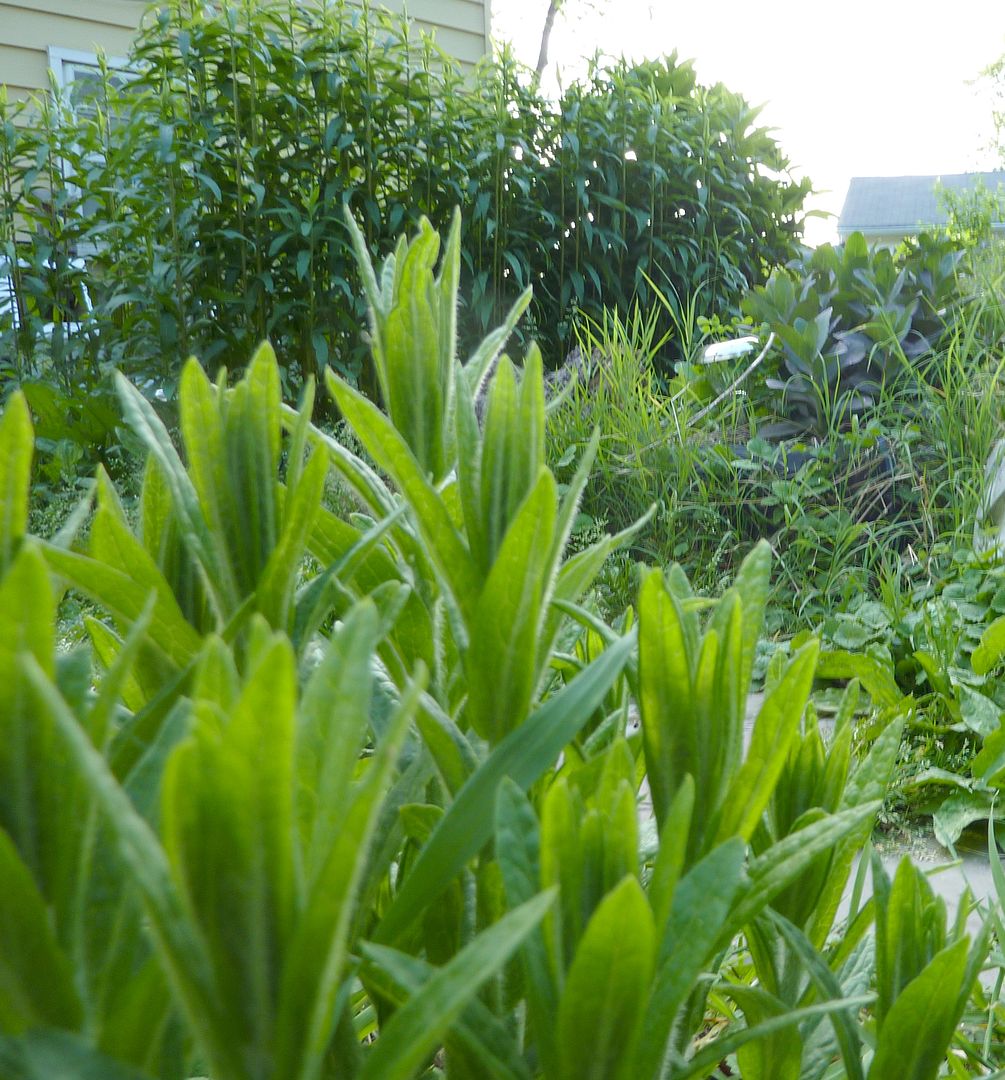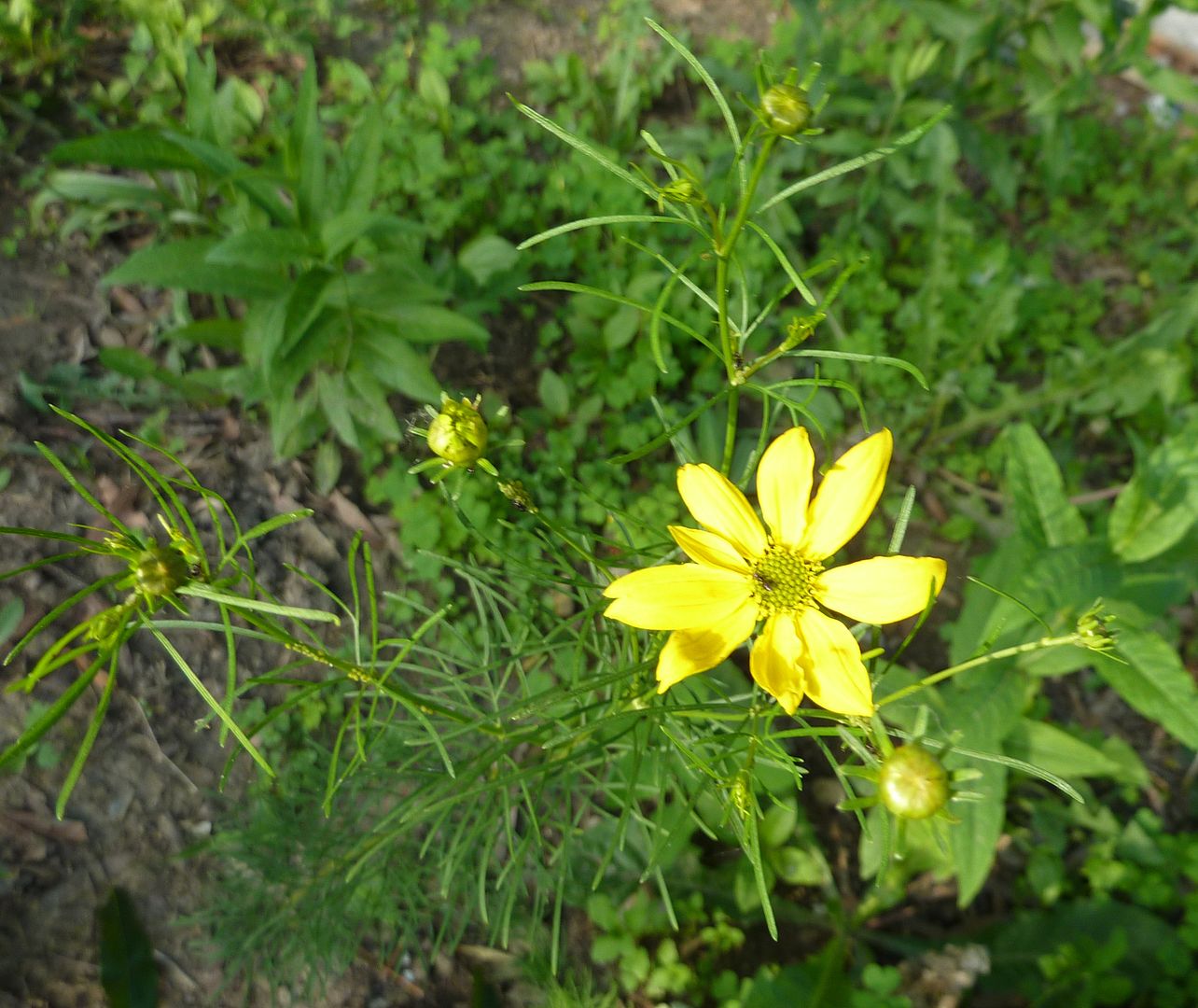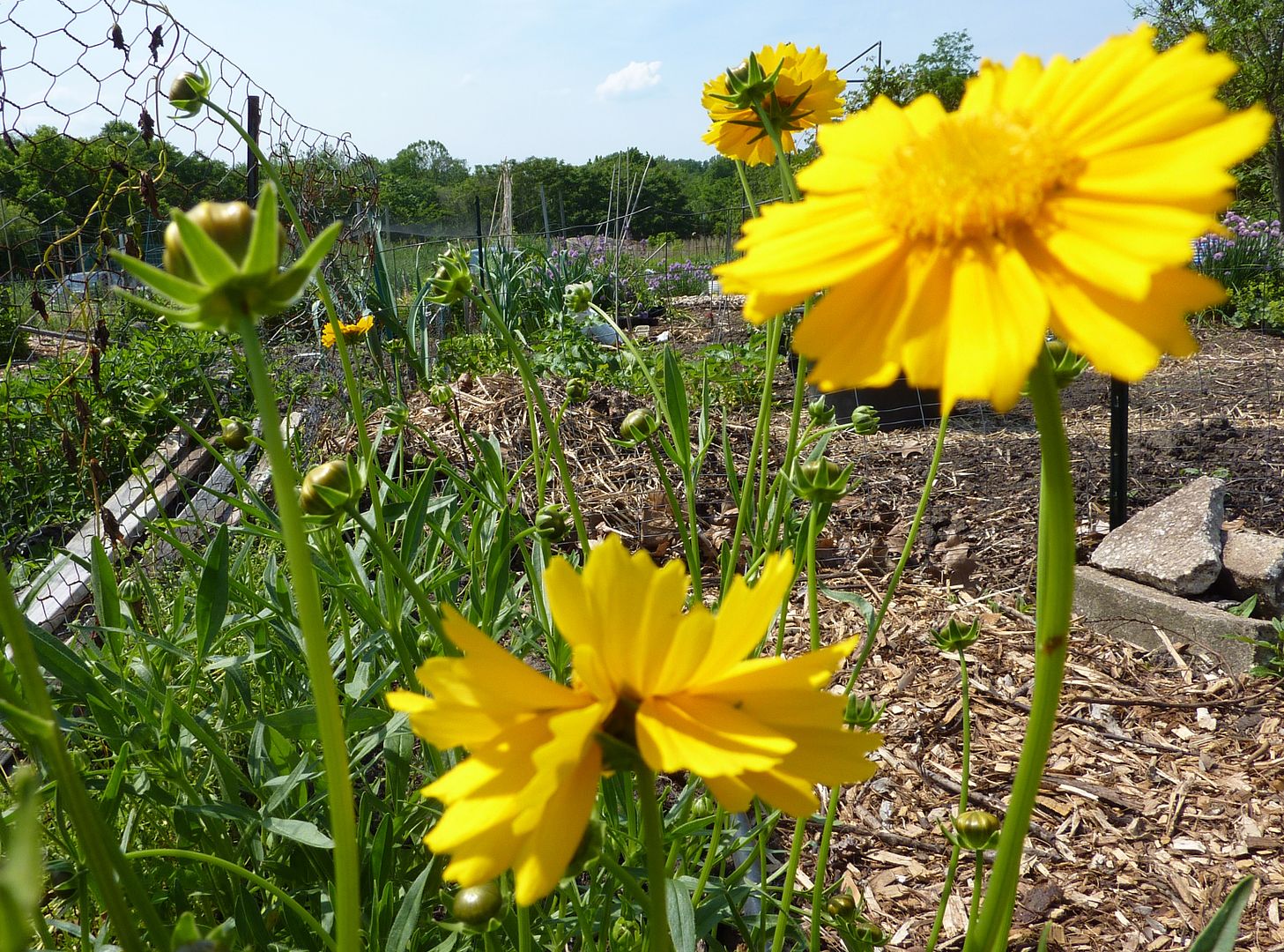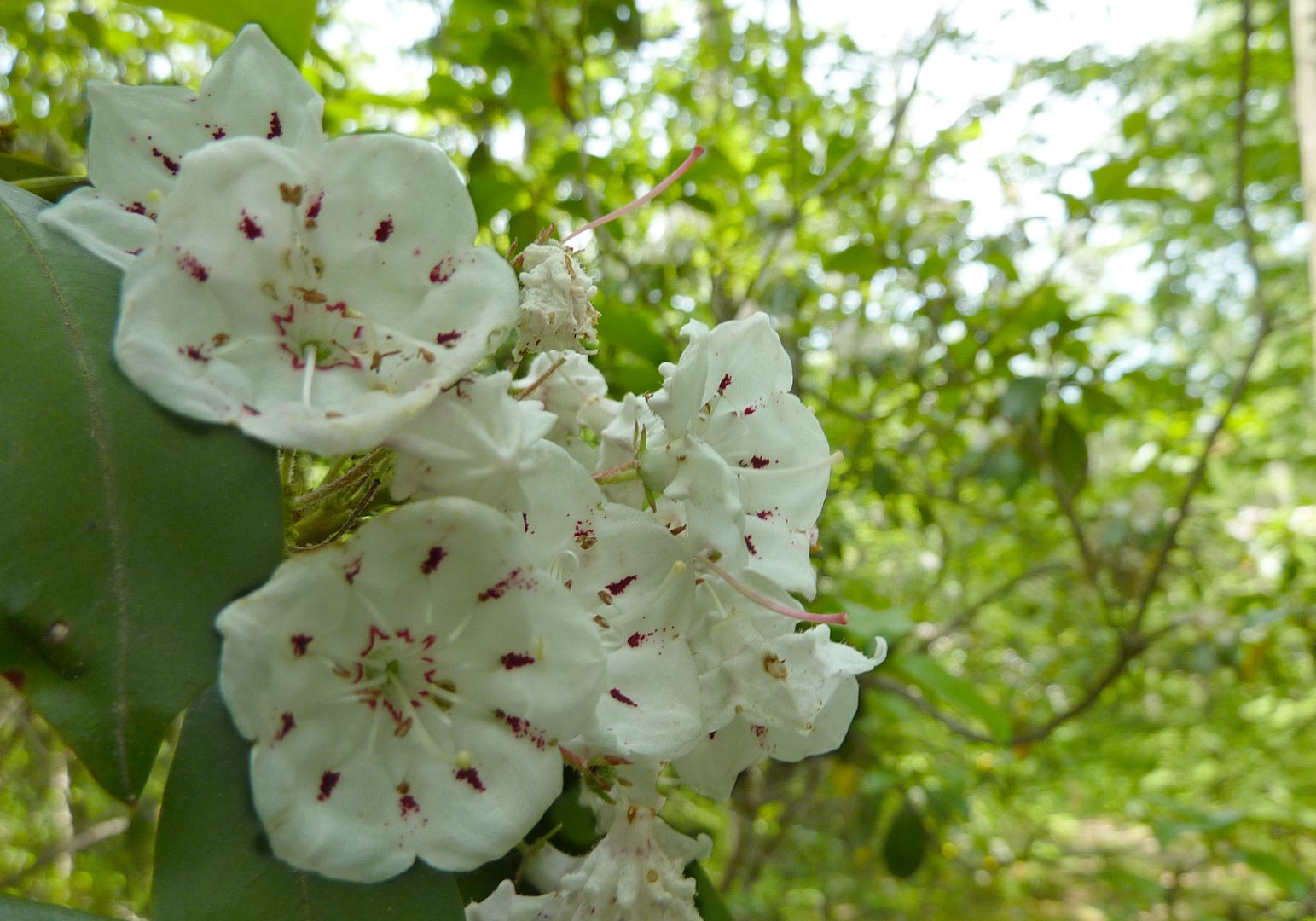Prairie plants always grow in full sun, but most will tolerate partial shade. Because they're not competing with the tree line filling in above them, they tend to come up later in the year. Pictured above are, Milkweed (foreground) and Goldenrod (back left) Joe Pye Weed (back middle) and a Sedum with blue leaves. Not a whole lot of flowers but there is a variety of nectar souses happening here. Prairie plants are excellent at attracting pollinators and are usually low growing enough that they put the pollinators at eye level.
The Coreopsis I got from the Mt. Cuba Center's Wildflower celebration this year just started blooming. I have this species already planted in the garden and it's a much bigger plant than this. But it hasn't flowered yet. I see other Tickseeds (Coreopsis sp.) blooming along the rail road here with much larger flowers to them.
The local community garden has a few planted to attract pollinators too.
We're still in the transitional period though so there's still a few trees blooming in the woods. Mountain Laurel blooms with odd umbrella shaped flowers. They're very unique looking and angular with fleshy tips or nubs behind each flower petal.
Rhododendron calendulaceum, Flame Azalea, I don't know what or where the word "Azalea" comes from. The genus name is Rhododendron but people call them Azaleas sometimes. Oh well. The Flame Azalea is one of the most underused landscaping jewels ever. This is native to the eastern US. Like all our native Rhododendrons they're deciduous. Supposedly they're pollinated by hummingbirds but this is rarely seen even among bird watchers. Butterflies are more likely the pollinator here but very few of the large ones are about this early. I have seen bees work them but the anthers on this thing are way the hell out from the flower. It's actually not good for bees to work this plant because the nectar is poisonous to humans and that's bad for the honey business. It takes a lot to see the effect from your average jar of honey though. Such an even is rare.




